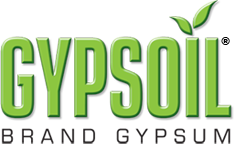Research Library
Search for research reports and other technical information related to agricultural gypsum application. Type a key word to narrow your search.
Infiltration in Response to Water Quality, Tillage, and Gypsum
| Source Publication: | Soil Science Society of America Journal Vol. 56 No. 1, p. 261-266 |
|---|---|
| Primary Author: | Baumhardt, Wendt, Moore |
| State: | Texas |
| Date/Year: | 1992 |
| Focus: | Electrolytes, irrigation, tillage |
| Category: | Peer Reviewed Papers |
| Crop: | Not Crop Specific |
| Reported Results: | The accumulation of salts from irrigation water with a moderate Na and very high salinity hazard into a silt loam soil reduced infiltration after irrigating for only 1 year. Continued irrigation tended to increase infiltration by increasing the soil salinity level, thus countering the soil sodicity effects on infiltration. Rainfall and excess irrigation water prevented salt accumulation at the surface and a progressive reduction in the lower profile, 0.3 to 0.9 m, as irrigation continued through 3 year. Compared with high ECw well water, low ECw, water reduced infiltration; however, powdered gypsum (PDG) can be used to increase infiltration of low ECe water in tilled soils. Infiltration into compacted soils with PDG was only slightly greater when no PDG was applied and unchanged by the PDG treatment in undisturbed soils. Tillage increased infiltration of reverse osmosis water and interacted with gypsum to increase infiltration.
Please click here for full article.
|

